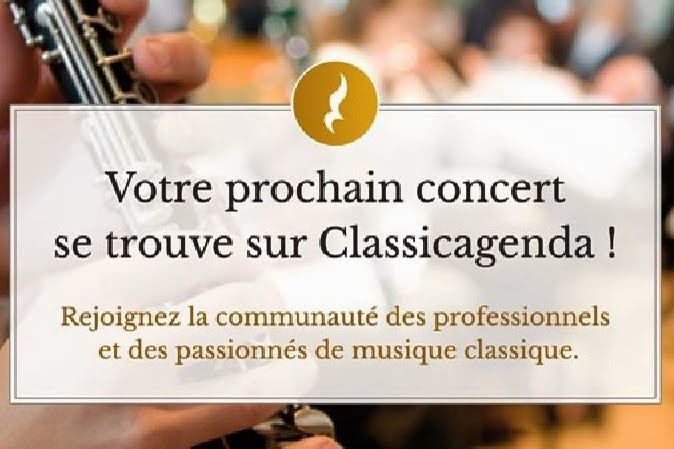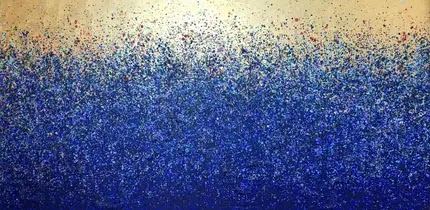This will
probably be my last post for this year… many visitors, season activities… The
Eiffel Tower is often changing its colours, symbolizing events, often dramatic
ones. Can we, in a certain way, hope that there will be less need for special
colours in 2018! Sincere thanks for following my blog during 2017… and before... and hopefully in 2018!
14.12.17
11.12.17
Naked, square trees
(The leaves
are gone for this year.) Yes, the Paris central parks are known for their
square trees. The typical garden "à la française" was inspired by the
Italian renaissance gardens, but with time in France it became perhaps even
more symmetrical, geometric… and part of the game was to propose these so
neatly cut trees. It was even said that this was a way to show how mankind,
represented by the King, could dominate nature. Although we may not adhere to this philosophy any more, the square-trees-tradition, created during the 16th,
17th and 18th centuries, is still very much visible in
the Paris central parks. The great number of parks which were created during
the latter part of the 19th century are much more influenced by the English
and to some extent also the Chinese gardens.
7.12.17
My new neighbourhood.
Yes, I moved. My metro station is now "Alma-Marceau" – which opened in 1923. We are at the junction of the Avenue Marceau and the bridge, Pont d’Alma … and also of the Avenue George V, Avenue Montaigne...
Maybe it’s
of some interest to know why these names? Alma refers to the Battle of Alma in
1854 during the Crimean War. Marceau refers to a French general, François
Séverin Marceau-Desgraviers (1769-96) who was killed in a battle at the age of
27 and who also is immortalized by Byron: “Honour to Marceau… brief, brave and
glorious was his young career…”. King George V (1865-1936) gave his name to the
previous Avenue d’Alma already in his lifetime, in 1918, with reference to WWI.
Avenue de Montaigne was previously called the “widows’ alley” and got its name
from the renaissance philosopher Michel de Montaigne (1533-92) much later.
Before
visiting the immediate neighbourhood, here we can see how the area developed
during the centuries and especially note that from almost being countryside,
the real change took place during the last decades of the 19th
century, Haussmann again. One detail was the fire pump which lifted the Seine
waters to some nearby basins and which was in operation here between 1781 and
1900.
Here are thus some views
from my new and immediate surroundings – I neglect the Palais de Tokyo and the
Galliera Museum on which I have already posted, see here and here. The Flame,
copy of the Flame of the Statue of Liberty, was a gift by the International
Herald Tribune to Paris in 1989, to commemorate the 1789 Revolution, see
previous post. I have already talked about the new orthodox church several
times, e.g. here.
Some views
of churches behind the trees, the Saint-Pierre de Chaillot (see here) and the American
Cathedral (see here).
A
fashionable area, nice in many ways, but where it’s difficult to find a haircut
for less than 70 € …
4.12.17
A nice little bag as a Christmas gift - 2.400 € ?
I made a
walk again along the Avenue Matignon, so nicely lit up during the (long)
Christmas season. I wrote about the avenue some almost nine years ago (see
here) … the lights have changed since…


… whereas the illumination of the Champs-Elysées, which the avenue crosses, seems to be back to the previous model.


Well, Avenue Montaigne is the street where you can find the Théâtre des Champs Elysées (see previous
post), the Plaza Athénée Palace...


Many belong
to the LVMH group, including of course Dior and Louis Vuitton.
The Louis
Vuitton show windows looked really spectacular (see also top picture), but, but… Some people admire Jeff Koons,
others don’t. Koons has often gotten support from Louis Vuitton (LVMH) and its CEO,
Bernard Arnault and his family. This has
obviously led to the creation of these bags, clutches and purses. Will they
replace the traditional Louis Vuitton bags? (Anyhow, they are even more expensive.) Well… I will not buy / offer any of
these.
Sorry, but I
could even ask what’s the difference in “good taste” between the Koons bags and
these, price range 10-20 €?
Jeff Koons is
also involved in a gift announced in 2016 to honour French-American friendship –
after the 2015 terror attacks. Well the "gift" by Koons was his idea, the concept… his tulips to be placed in front of
the Palais de Tokyo (see previous post). The 3-4 million dollars needed to realize the
project were / are? still to be found. You may imagine that there are very
different opinions about this project, which in the meantime obviously is “delayed”. Well, the
idea is not to replace the present Bourdelle sculpture (see previous post) - the
tulips are supposed to be placed on the other side of the columns.
After
reading this, you may imagine that I’m not an absolute Koons admirer… and you
may be right. :-)
Labels:
Avenue Montaigne,
Paris 8
30.11.17
What do these gentlemen have in common?
What do these gentlemen have in common? They are Swedish and they have a street or a square named after them in Paris. After the recent inauguration of Place Strindberg (see previous post), a friend asked me who are the other Swedes who have been honoured? So here I try to answer. Have I forgotten someone?
Alfred Nobel, 1833-96, may not need any long biography here… dynamite of course, but
as an inventor he held 355 different patents. He lived in Paris 1873-91, was
fluent in French (and a number of other languages) and kept his Paris home
until his death – in San Remo in 1896. His will was written in Paris in
1895 - on a desk that you may still find at the Swedish Club in Paris (see
previous post). To honour his name, he has got a very modest little street,
rather some stairs, on the northern slopes of Montmartre. Why there and why so
modest? (Paris 18)
Raoul Wallenberg, 1912 - ??, was an architect, diplomat … and is especially known for
having saved tens of thousands of Jews in Nazi-occupied Hungary, while working
in Budapest as a Swedish special envoy. He was arrested by a Red Army intelligence
service in January 1945 and what happened to him then is still unknown.
Considering the number of avenues,
streets, places, monuments that you can find worldwide to his honour, it may be
a bit surprising that he has got a street named after him in Paris only in 2007
and far from the city centre, even on the other side of the “périphérique”.
(Paris 19)
Carl Linnaeus, or Carl von Linné, 1707-78, is mostly known for the “binomial nomenclature”
used in zoology and botany. One example is the “linnaea”, or twinflower, his favourite
flower, officially with the name “Linnaea borealis”. Linné had no very close
relations with Paris – he made a short visit in 1737 and then met with the
French naturalist Antoine de Jussieu, member of the famous botanist Jussieu
family. It is then quite “natural” that Linné has a street named after him –
already in 1865, linking one of the entrances to the “Jardin des Plantes” and
the “Place Jussieu”. On one street corner you can find an imposing fountain,
dedicated to another naturalist, Georges Cuvier. (Paris 6)
Jacob Berzelius, 1779-1848, was a chemist, considered to be one of the founders of
modern chemistry. He worked with atomic weights and developed the modern
chemical formula notation (for example CH2O for glucose, twice as many hydrogen atoms as carbon and oxygen). He was also the first person to make a distinction between organic and inorganic compounds, he invented the term "protein".... His portrait here is from just before the end of his life (1848) and is a daguerreotype, which had just been invented by Louis Daguerre. The Paris street, which had the Berzelius name already in 1864, is not in a (until further) very fancy area. It's a long street and after a bend it actually changes name to Passage Berzelius. (Paris 17)
Raoul Nordling, 1881-1962, was a businessman (basically in paper) and a diplomat - Swedish consular general in Paris since 1926. Today one remembers him especially for his role before the liberation of Paris in 1944 when he negotiated with the German commander, von Choltitz, in order to "save" Paris despite some instructions to demolish it given by Hitler. The liberation of some 3.000 political prisoners was also obtained. Orson Wells played Nordling's role in the 1966 movie "Is Paris burning?" and there is a more recent movie from 2014, "Diplomacy", adapted from a theatre play. After the fall of Nazi Germany, Choltitz spent two years in prison. Nordling was awarded a medal by the French State, which he passed over to Choltitz, recognizing him as the real hero. Nordling has a square named after him. (Paris 11)
Gustaf V, 1858-1950, was King of Sweden from 1907 until his death. There may be some thoughts about his sometimes rather pro-German and an often rather conservative attitude... but during his reign he accepted a stripped monarchy, a universal and equal suffrage (including for women from 1919). He was an avid hunter and sportsman and even represented Sweden as tennis-player ("Mr G") during younger years. He was married to Victoria (of Baden) and they had three sons. Victoria died already in 1930 after having spent many years abroad - officially for health reasons - in Italy (Capri - Axel Munthe). Gustaf's name was given to this "avenue" in 1951 - no cars around. (Paris 16)
August Strindberg, 1849-1912, very recently got his name on a Paris street sign. I wrote a lot about it already in some recent posts, here and here. (Paris 6)
Now, the question is what about Swedish women? Nobody so far... possibly with the exception of Queen Astrid, born Swedish Princess, married to the Belgian King Leopold III. She died in a car accident in 1935, 30 years old. Since 1936 she has had a square in her name, Place de la Reine Astrid. This is where you find a statue which was a gift by the Belgian State in recognition of the Belgian-French friendship during WWI. (I already wrote about it here.) (Paris 8)
27.11.17
The end of one season… the preparation of the next.
Maybe this photo is a bit symbolic? The end of one season... with the next season already preparing... Here are two more photos in the same spirit.
I made a
tour in my (new) neighbourhood... - it had been a bit windy -
raking, collecting… millions of laves.
Actually, they
would all be worthy of a closer look!
Here are
some samples of what I saw.
Some of the
typically French square trees started to show that some new trimming would soon
be needed.
I noted that that the park regulation, article no. 8: "Keep dogs on leash." was not always followed.
During the
walk I could see the bulbs of the new orthodox cathedral in all angles. (I
wrote about it here.)
Two last
pictures where Photoshop did something I didn’t expect.
Subscribe to:
Posts (Atom)
































































